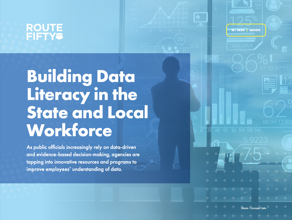The headline on the cover of Time magazine read “Sky High Housing.” Behind it was a graphic of a young couple and their dog looking upwards to the sky as their dream home floated away. The story was about rising home prices locking a generation of buyers out of the market. It was published on September 12, 1977, but might as well have been yesterday.
The United States has a housing crisis. By now, the facts of the problem are so familiar—growing homelessness, rents that are rising much faster than incomes are, the four million “supercommuters” who spend at least three hours driving to and from work—that the political conversation has moved toward what can be done to solve it.
On the surface, the answers are simple: Build more housing and expand subsidies for people who can’t afford what the private market has to offer.
But, as the 1977 Time cover shows, the lack of moderately priced housing, while never as severe as it is now, is a decades-old problem—and a problem that has resisted myriad efforts to solve it. And there’s a very simple reason why. Aside from developers—whose financial stake in getting houses and apartments built looks like a conflict of interest—the members of a pro-housing political constituency are difficult to identify. People who lose when new housing is blocked don’t even know who they are. Organizing people who don’t yet live somewhere is a seemingly impossible task. But it’s crucial to solving the housing-affordability crisis gripping much of the country. In many of the country’s most economically vibrant areas, existing homeowners—who have a financial stake of their own—pressure their local governments into blocking any new construction.
This problem has been vexing policy makers since the very beginning of the housing shortage. The first prominent mention of it came two years after 1977 Time article, when an MIT planning professor named Bernard Frieden published a book called The Environmental Protection Hustle, which was one of the first works to identify not-in-my-backyard (NIMBY) sentiment as an obstacle to constructing new homes. “The review process is highly political, and the people with the greatest stake in its outcome—housing consumers—play no part in it,” he wrote about local housing policies. “They are unorganized, and probably unorganizable.”
And for decades it was true: unorganized and unorganizable. Frieden’s book inspired economists and the press to study and talk about the nation’s growing housing shortage. In 1981, a New York Times headlined blared: “Changing San Francisco Is Foreseen as a Haven for Wealthy and Childless.” That same year, Lawrence F. Katz, a University of California, Berkeley, senior who is now a labor economist at Harvard, echoed the Times’s sentiment with a commencement speech that bewailed the Bay Area’s growing housing supply problems and drew on research that Katz had done with a Berkeley professor named Kenneth Rosen. In terms of policy, however, very little changed.
Katz foresaw this. “I believe, regrettably, that this will require some sort of state or federal action that leaves local governments with wide discretion over land use decisions but still requires each community to accept its fair share of regional housing needs,” he told his fellow economics graduates during his speech.
A few months later, Sonja Trauss was born in Philadelphia. Trauss was a natural rabble-rouser who had organized a protest of her science teacher in middle school and was once arrested for protesting a City of Philadelphia plan to renovate a popular park to make it less attractive to skateboarders. She moved to the Bay Area in 2011 after dropping out of the economics Ph.D. program at Washington University in St. Louis, and shortly after adopted housing as her newest cause. She wrote letters to local planning commissions in support of every big project development pipeline. At the encouragement of her roommate, she organized friends as the SF Bay Area Renters’ Federation—better known by its unforgettable acronym, SF BARF.
By then “NIMBY” was a well-known epithet, and the idea that a lack of housing was the underlying cause of high rent and home prices in desirable regions like the Bay Area, Seattle, and Washington D.C., was getting regular treatment in the press. The person most responsible for this was Edward Glaeser, a colleague of Katz’s at Harvard. Along with Joseph Gyourko at the Wharton School at the University of Pennsylvania, Glaeser had published a batch of influential papers that used construction industry data to create a national figure for how much it cost to build a house or apartment, and from that showing that the same harsh zoning and land-use restrictions that had Rosen and Katz had blamed for rising prices in the Bay Area were now conspiring to make housing scarce and expensive in big metro areas around the country.
Glaeser was a decorated economist, but he was no organizer. He spent most of his time teaching and lecturing, or holed up in his comically messy office, thinking big thoughts surrounded by disjointed stacks of books and stained teacups with dried out bags still inside them. When Glaeser thought about how problems got solved, he imagined people in imperial columned buildings like the one he worked in on the edge of Harvard Yard.
And so it fell to people like Trauss to create a constituency for unbuilt housing. She had a gift for getting attention, showing up to planning meetings in leggings and cowboy boots and delivering lectures on supply and demand at the public comment microphone. As her profile rose, thanks to media attention and constant tweeting, Trauss she discovered was far from alone. Around the country, Millennial-aged were organizing yes-in-my-backyard (YIMBY) groups and providing a youthful counterbalance to the usual collection of anti-development crusaders who complained about shadows and neighborhood character at city meetings across America.
In 2016, some two hundred of these people, representing cities including San Francisco, Seattle, Austin, Minneapolis, Boston, gathered in Boulder, Colo. for the first national YIMBYtown conference. The conference was held in a Hyatt and had sessions with titles such as “Building a Progressive Urbanist Coalition” and “Reforming the Sacredness of Single- Family Zoning.” It was a voice that as new and needed, but its members were also overwhelmingly well-educated and white, limiting its appeal and power.
During a breakout session called “Why Is the YIMBY Movement So White?,” a small subset of people had a tortured discussion about how they could forge alliances with tenant organizations who didn’t like them very much and fought new housing on the grounds that it would foment gentrification and displace low-income people. There would be more YIMBYtowns in the years ahead, and each time this topic would rise to the top of attendees’ concerns.
The third YIMBYtown was held in Boston in 2018, and Ed Glaeser kicked it off with an hour-long presentation of housing data that he traced with a laser pointer. The real action came later.
The very next day, an older tenants-rights organization called City Life/Vida Urban was hosting the “Boston People’s Plan Assembly,” to collect neighborhood-level proposals for how to protect tenants from economic displacement. It was held in a church just a few blocks away from the YIMBYtown gathering. The class and cultural differences were clear: Whereas the YIMBY event drew a young crowd, was conducted in English, and gave way to heavy nighttime drinking, this event was older, multilingual, and had a side room with free childcare.
At the end of the Assembly, Lisa Owens, the executive director of City Life/Vida Urbana, went to the altar to explain that the group’s supporters were going to march to the YIMBY conference because they had something to say. After a round of cheers, the 200-or-so people at the assembly left their pews to form a wobbly line behind a marching band, then proceeded out of the churchyard, down a hill, and disjointedly around a street corner toward Roxbury Community College, where the YIMBY event was wrapping up.
By then Joey Lindstrom, lead organizer for the National Low-Income Housing Coalition, was giving the plenary talk. Lindstrom had arrived at the YIMBYtown conference hoping to be some sort of bridge between YIMBYs and anti-gentrification groups like Right to the City, a national racial-justice and anti-gentrification group with which City Life was affiliated, and which he worked with closely. His talk was held in a gym, behind a makeshift curtain, and he was discussing a slide that said that read “The Legacy of Reduced Federal Support for Housing,” when, all of a sudden, somewhere down the hall people started to hear the sound a people yelling, “We’re here! Why won’t you listen?” and the faint sound of music.
Lindstrom stopped talking, and the collection of YIMBYs in folding chairs turned around in apprehension as the marching band and its procession burst through makeshift curtains. It took a few minutes for the People’s Plan Assembly to assemble at the front of the room, next to Lindstrom and under a basketball hoop.
Owens welcomed everyone to Boston. “There are some people that are part of the YIMBY movement that truly care about affordable housing,” she said. “I want to invite those people who are here who care about affordable housing and who care about displacement protection, who care about the people who live in the city of Boston who’ve been living and working and fighting to stay in their homes. I invite you to learn from those of us who are already working on the front lines. I invite you to not put forward housing proposals without talking to us. I invite you to follow our lead.”
Whether anyone can forge a cohesive coalition out of the interests represented that room—people of varied ages and ethnic backgrounds, people who support new development, and people with a passion for protecting the most vulnerable tenants—is not yet clear. But if the goal of building more housing is to make shelter more affordable and more plentiful so that more people can enjoy the opportunities of thriving cities, then that’s the coalition that is needed.
This much is clear from fights like the one California had last year. Senate Bill 50, a controversial piece of legislation that would have stripped away local restrictions on high-density housing near transit, was felled by a coalition of wealthy neighborhoods worried about density and their views along with tenant groups worried about gentrification. There are also omens of success. In Oregon, where a much more diverse coalition helped pass a sweeping set of bills that simultaneously made it the first state to pass statewide rent control and the first state to end single-family zoning in most neighborhoods. With support from a broad range of interests, Minneapolis recently became the first major U.S. city to effectively end single-family zoning.
Rising housing prices and new forms of activism have finally put housing atop the agenda. But homeowners—the economist William Fischel called them “homevoters”—still own the politics. The only way to counter that—the only way to truly organize the unorganizable—is to broaden the YIMBY coalition so that gentrifiers and the gentrified are somehow on the same side.
The days and months after the confrontation in Boston would feature lots of disagreement and unproductive tweeting. But the people face-to-face in that room saw a healthy tension and heard a lot of clapping. Clapping followed by handshakes and Lindstrom noting the weirdness of being the subject of a protest that included several people he considered friends. Then the band revved back up and the People’s Plan Assembly marched out.
“Usually the way it works when I’m doing a speech or talk is I quit halfway through to go join a protest,” Lindstrom said when the gym was finally quiet. People laughed, and Lindstrom resumed his presentation. He had five minutes left and nineteen slides to get through.




